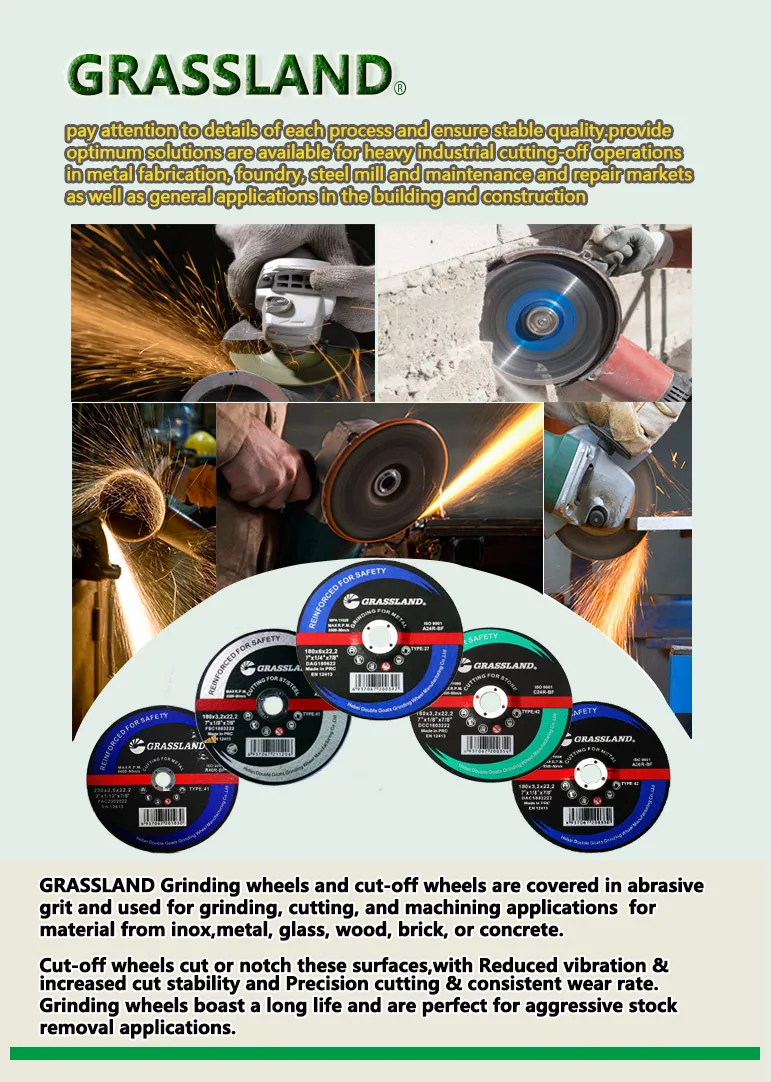Understanding Grinding Wheel Sharpening Stones An Essential Guide
Grinding wheels and sharpening stones are fundamental tools in the world of manufacturing, metalworking, and woodworking. These equipment pieces are crucial for maintaining the sharpness of cutting tools, ensuring efficiency and precision in various trades. This article will delve into the significance of grinding wheel sharpening stones, their types, usages, and tips for effective maintenance.
What is a Grinding Wheel?
A grinding wheel is a cylindrical tool composed of an abrasive compound, used for various grinding and abrasive machining operations. The structure of a grinding wheel includes a hard, porous material that allows the wheel to cut through metals or other materials. Common abrasive materials include aluminum oxide, silicon carbide, and diamond, each selected based on the specific application.
What is a Sharpening Stone?
Sharpening stones, commonly referred to as whetstones, are flat pieces of hard material used for sharpening edges on tools and implements. They are typically made from a variety of materials, including natural stones like Arkansas stones, or synthetic materials such as aluminum oxide or silicon carbide. Sharpening stones come in various grits, allowing users to achieve different levels of sharpness, from coarse to fine.
The Importance of Using Grinding Wheels and Sharpening Stones
The primary function of grinding wheels and sharpening stones is to restore the cutting edge of tools, which inevitably dulls over time. Whether you are a professional tradesperson or a DIY enthusiast, maintaining sharp tools is essential. Dull tools can lead to reduced efficiency, increased wear and tear, and a higher chance of accidents due to inadequate control.
In woodworking, for instance, sharp chisels and planes can make a significant difference in the quality of finish and the ability to work with hard-to-reach areas. In metalworking, cutting tools must be sharp to ensure precision and prevent damage to both the tools and the workpieces.
Types of Grinding Wheels and Sharpening Stones
grinding wheel sharpening stone

1. Grinding Wheels - Bench Grinding Wheels These are usually mounted on a bench grinder and used for general grinding tasks. - Cut-off Wheels These are thinner and designed for slicing through metal sheets or rods. - Mounted Points Small grinding wheels mounted on a spindle, used for precision grinding in hard-to-reach areas.
2. Sharpening Stones - Water Stones These require water for lubrication and produce a fine edge on tools. - Oil Stones Used with oil as a lubricant, they are generally harder and provide a finely honed edge. - Diamond Stones These have a diamond abrasive layer, making them durable and effective for quick sharpening.
Tips for Efficient Tool Sharpening
1. Choose the Right Abrasive Depending on the material of the tool you're sharpening, choose an appropriate grinding wheel or sharpening stone. For harder materials, diamond abrasives may be the best choice.
2. Maintain the Right Angle When sharpening, it's crucial to keep a consistent angle between the tool’s edge and the abrasive surface to ensure uniform sharpness.
3. Don’t Rush Take your time while sharpening. An even, gentle approach will produce a sharper edge without overheating or damaging the tool.
4. Keep It Lubricated Use water or oil as required to reduce friction, which not only helps in achieving a sharper edge but also prolongs the life of the abrasive material.
5. Regular Maintenance Periodically check and clean your grinding wheels and sharpening stones to maintain their effectiveness. Dull or worn surfaces can lead to poor results.
Conclusion
Grinding wheels and sharpening stones play a crucial role in the maintenance of tools across various industries. Understanding the different types available, their applications, and maintenance practices can significantly enhance the longevity and effectiveness of your cutting tools. Moreover, investing time in sharpening your tools will lead to higher-quality work, greater efficiency, and a safer working environment. Remember, a sharp tool is not just more effective; it is also safer, easier to control, and more enjoyable to work with.
Post time:Dec - 12 - 2024

















